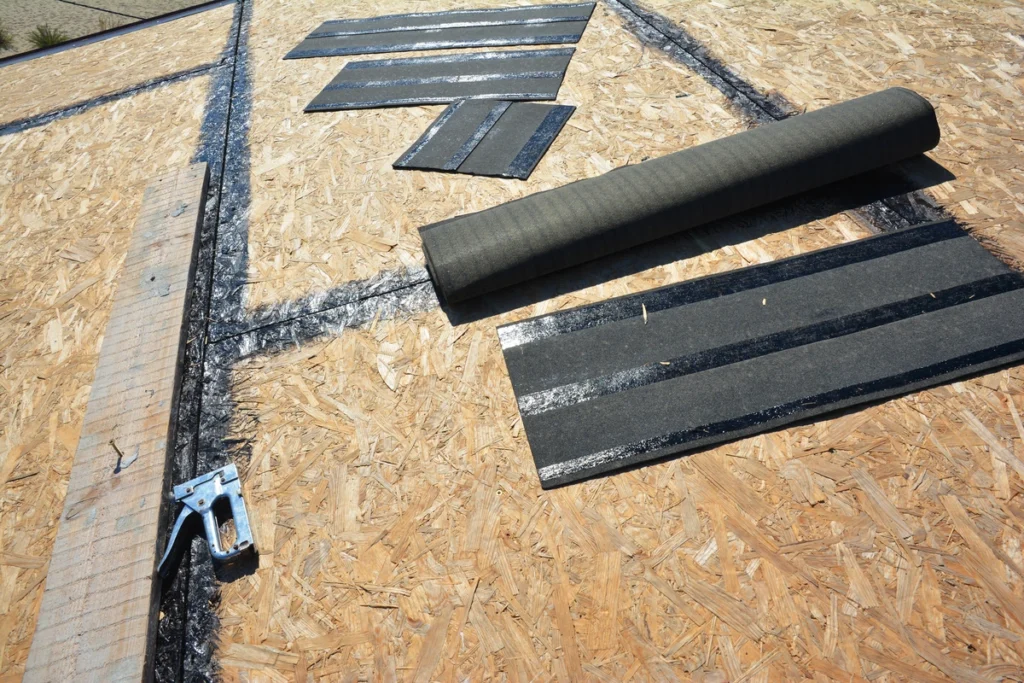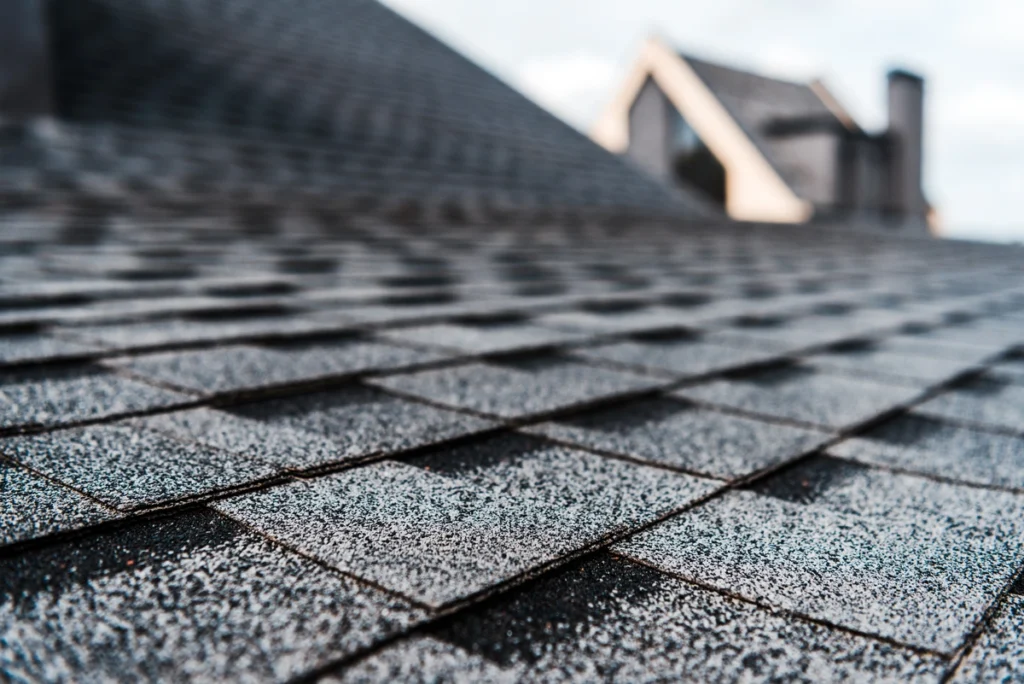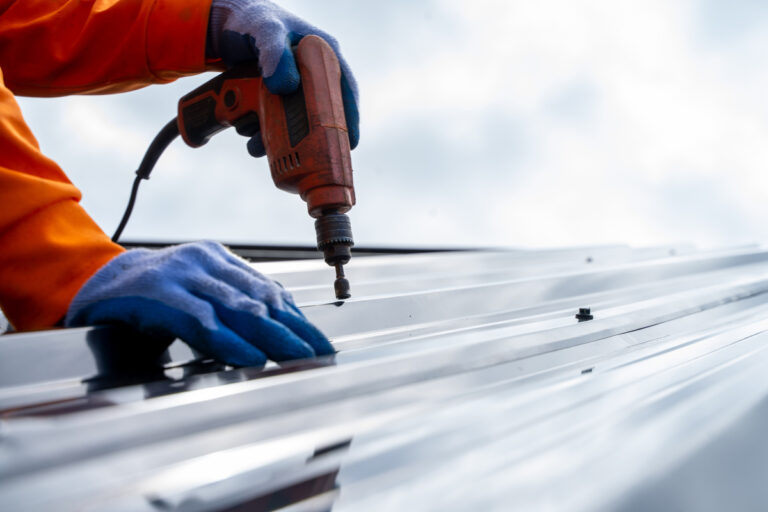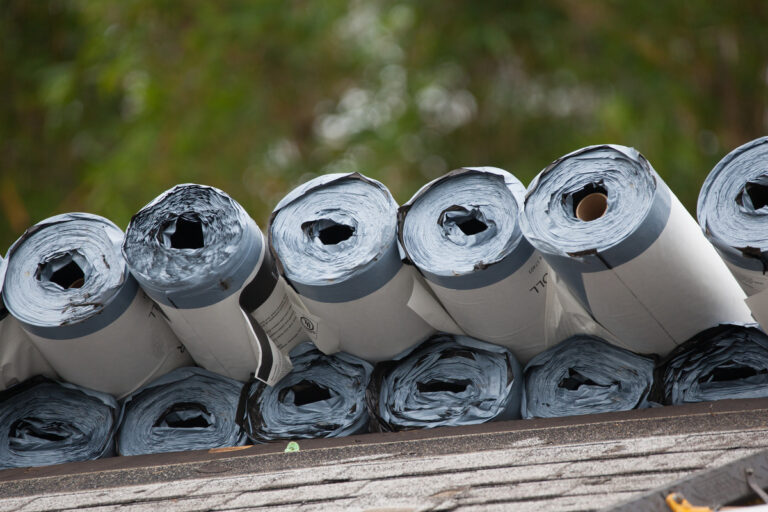7 Parts of a Roof to Know Before Hiring a Roofing Contractor
April 4, 2024
When it comes to maintaining or replacing your roof, having a basic understanding of its different components can help you communicate effectively with roofing contractors and make informed decisions about your home. So in this article, we’re going to go over seven essential parts of a roof that every homeowner should know.
Inside this blog:
- The 7 primary components of a roof that you should know
- Reasons why each roofing component is important
Keep reading to learn more about each of the 7 roof parts so you can be an empowered homeowner who understands your roof!
1. Roof Deck

The roof’s decking might not be the most visible part of your roof structure, but it plays a critical role in its overall integrity. Think of it as the sturdy foundation that holds everything together. Here’s why it’s essential:
Why it’s Important
- Prevents Leaks: A damaged or deteriorating roof deck can compromise the integrity of your entire roof system. Holes or weak spots in the deck can allow water to seep through, leading to leaks and water damage inside your home.
- Ensures Structural Integrity: Just like a house needs a solid foundation, your roof needs a sturdy deck to stay in place. A weak or deteriorating deck can compromise the structural integrity of your entire home, posing safety risks and potentially costly repairs.
- Supports Roofing Materials: From shingles to underlayment, all roof components rely on the deck for support. A strong and well-maintained deck ensures that your roofing materials can do their job effectively, protecting your home from the elements.
2. Underlayment
The underlayment is a waterproof membrane installed directly on top of your own roof deck, beneath the outer roofing material–whether that’s asphalt shingles, wooden or metal strips, or concrete or clay roof tiles. It serves as an additional layer of protection against water infiltration and helps to prevent leaks and moisture damage.
Why it’s Important
- Water Barrier: The underlayment acts as a shield against water infiltration, serving as an additional layer of protection between your roof’s exterior and the interior of your home.
- Moisture Management: Even the smallest amount of moisture can wreak havoc on your roof’s structural integrity over time. By effectively managing moisture, the underlayment helps to maintain a dry and stable environment within your roof system, minimizing the risk of rot, mold, and decay.
- Enhanced Durability: A quality underlayment can significantly extend the lifespan of your roof by providing an extra layer of defense against the elements.
3. Shingles

Your roof’s shingles are the outermost layer of your roof and provide protection against the elements, including rain, snow, wind, and sunlight. They come in various materials, including asphalt, wood, metal, and slate, each offering different aesthetics, durability, and price points.
Why it’s Important
- Protection from the Elements: Shingles act as a barrier between your home and the elements, shielding it from rain, snow, wind, and sunlight. Their durable construction helps to prevent water infiltration, resist damage from hail and debris, and withstand harsh weather conditions year-round.
- Aesthetic Appeal: Beyond their protective function, shingles also contribute to the overall appearance of your home. With a wide range of colors, styles, and materials available, you can choose shingles that complement your home’s architecture and reflect your personal taste.
- Structural Integrity: In addition to their visual impact, shingles play a crucial role in maintaining the structural integrity of your roof. By providing a durable and weather-resistant covering, they help to support the weight of snow, ice, and other debris.
4. Flashing
Flashing is a thin, weather-resistant material installed in vulnerable areas of the roof, such as intersections, valleys, chimneys, and vents. Its purpose is to prevent water from seeping into the roof and causing leaks at these critical junctures. You can think of it as your roof’s ice and water shield.
Why it’s Important
- Water Management: Properly installed flashings act as a barrier against water infiltration, directing rainwater away from vulnerable areas such as roof valleys, chimneys, skylights, and vents.
- Prevention of Moisture Buildup: Water infiltration can lead to moisture buildup, which can create the perfect environment for mold, mildew, and rot to thrive.
- Enhanced Structural Integrity: In addition to protecting against water damage, flashings also contribute to the structural integrity of your roof. By sealing gaps and joints between roofing materials, flashings help to reinforce vulnerable areas and prevent them from weakening over time.
5. Ventilation
Roof ventilation allows air to circulate freely in the attic space, helping to regulate temperature and humidity levels. It typically consists of intake vents, located along the eaves or soffits, and exhaust vents, located near the ridge or peak of the roof.
Why it’s Important
- Preventing Moisture Buildup: Without proper ventilation, moisture from everyday activities like cooking, bathing, and doing laundry can accumulate in your attic.
- Reducing Heat and Humidity: During hot summer months, attics can become like ovens, trapping heat and humidity inside. This excess heat can cause your roof shingles to deteriorate prematurely and can even affect the performance of your air conditioning system.
- Prolonging Roof Lifespan: Roofing materials are designed to withstand a certain amount of thermal stress, but excessive heat buildup can cause them to warp, crack, or degrade over time.
6. Gutters and Downspouts
Gutters and downspouts are essential for directing rainwater away from your home’s foundation and preventing water damage to your roof, siding, and landscaping. Gutters collect rainwater as it runs off the roof and channel it to downspouts, which carry it safely away from the house.
Why it’s Important
- Preventing Water Damage: The primary role of gutters and downspouts is to channel rainwater away from your home’s foundation. Without them, rainwater would cascade off the roof and pool around the perimeter of your house.
- Preserving Landscaping: In addition to protecting your foundation, functional gutters and downspouts also help preserve your landscaping. Without proper drainage, excess water from rain storms can erode soil, wash away mulch, and drown plants.
- Preventing Basement Flooding: Clogged or malfunctioning gutters and downspouts can lead to water infiltration in basements and crawl spaces. When rainwater is not properly diverted away from the house, it can seep into the ground and find its way into lower levels of the home.
7. Fascia and Soffit
The fascia is the vertical board that runs along the edge of the roof and supports the bottom edge of the roof deck. The soffit is the horizontal underside of the eaves, located beneath the fascia. Together, they provide a finished appearance to the roof’s edges and help to protect the roof and attic from weather damage.
Why it’s Important
Fascia and soffit might seem like small details, but they serve a big purpose when it comes to protecting your home. Here’s why they’re so important:
- Enhanced Aesthetics: First and foremost, fascia and soffit add to the overall appearance of your home’s exterior, matching a variety of roof styles. They create a finished look, covering the edges of the roof and providing a clean transition between the roofline and the walls.
- Protection Against Moisture: Fascia and soffit act as a barrier, helping to prevent moisture from infiltrating the roof and attic. Without them, water could seep into the roof decking and framing, leading to rot, mold, and other damage.
- Ventilation and Airflow: Soffit vents are an integral part of attic ventilation systems, allowing fresh air to enter the attic and exhaust warm, moist air. This airflow helps regulate temperature and humidity levels in the attic, reducing the risk of condensation and mold growth.
🏠 An Empowered Homeowner Knows Their Roof
Understanding these key components of your roof can help you communicate effectively with roofing contractors, make informed decisions about roof repairs or replacements, and ensure the long-term health and integrity of your home. Whether you’re hiring a contractor for routine maintenance or a major roof renovation, having a basic understanding of your roof’s anatomy is essential for protecting your investment and maintaining your home’s value.
Contact our team of contracts at Roof X and get top tier craftsmanship and dedicated customer service from a family-owned business. We’re passionate about keeping homes protected with solid roofs–so don’t wait to reach out to the X’perts at Roof X!




